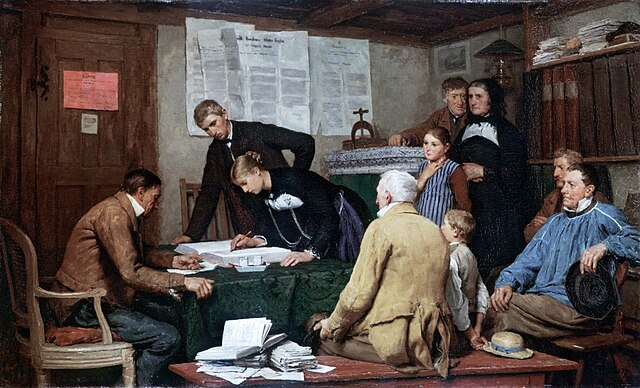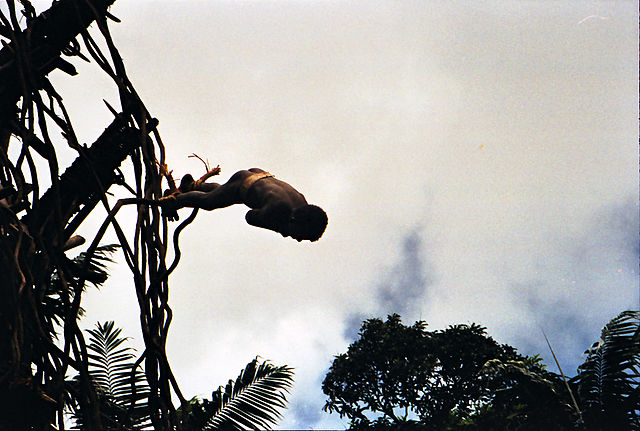In anthropology, liminality is the quality of ambiguity or disorientation that occurs in the middle stage of a rite of passage, when participants no longer hold their pre-ritual status but have not yet begun the transition to the status they will hold when the rite is complete. During a rite's liminal stage, participants "stand at the threshold" between their previous way of structuring their identity, time, or community, and a new way.
Initiation ritual of boys in Malawi. The ritual marks the passage from child to adult male, a liminal stage in the context of their lives.
Destruction, from The Course of Empire by Thomas Cole (1836)
Liminal phase of a rite of passage: Albert Anker's Die Ziviltrauung ("The Civil Marriage"), 1887
A painting depicting Jacob's Ladder to heaven
A rite of passage is a ceremony or ritual of the passage which occurs when an individual leaves one group to enter another. It involves a significant change of status in society. In cultural anthropology the term is the Anglicisation of rite de passage, a French term innovated by the ethnographer Arnold van Gennep in his work Les rites de passage, The Rites of Passage. The term is now fully adopted into anthropology as well as into the literature and popular cultures of many modern languages.
Initiation ritual of boys in Malawi. The ritual marks the passage from child to adult, each subgroup having its customs and expectations.
The Hamar are known for their custom of "bull jumping", which initiates a boy into manhood.
Jewish boy reading a Torah scroll at his Bar Mitzvah, using a Yad
Land diving is a rite of passage for boys of the South Pacific island of Pentecost







